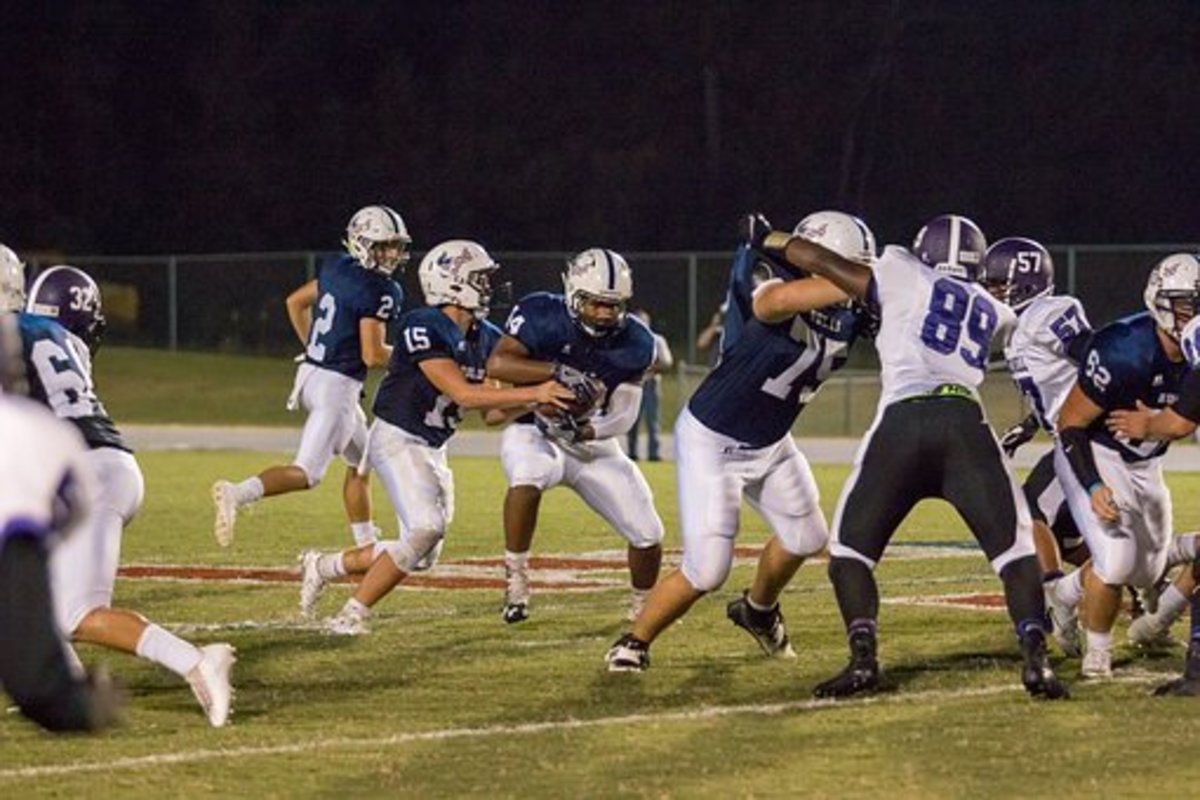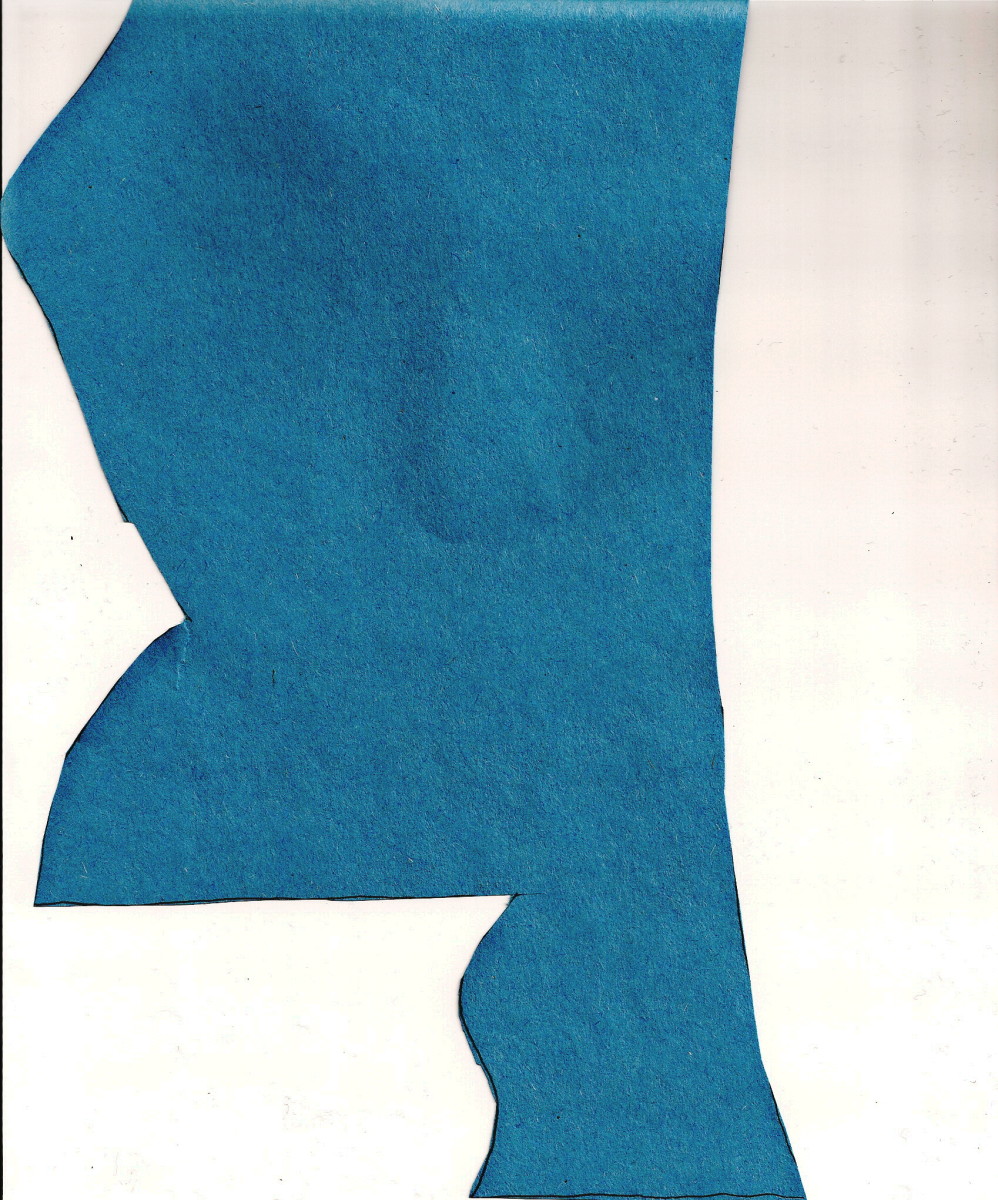University of Tennessee Volunteers Football
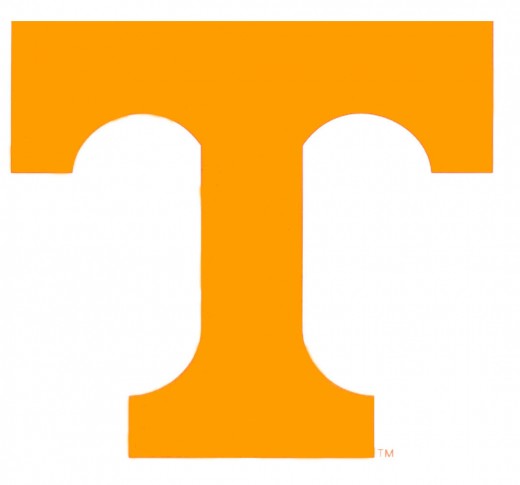
Growing up in the great state of Tennessee and now calling Knoxville home, I basically had no choice but to be a Tennessee Vol fan. Luckily for me, I love this team and with so many great teams playing at Neyland over the years it has been fun to be their fan. I'm proud to say I bleed Orange and you can catch me at the game, on my couch watching the game, or at any of Knox-Vegas's many excellent sports bars watching the game on any given Saturday when "It's Football Time in Tennessee"!
With that in mind, I thought I would write a hub briefly detailing some of the history of this great program. From their legendary stadium to their legendary mascot, I'd like to share some of this great school with my readers. I tried to break this hub down into logical sections in an attempt to keep everything organized.
Brief History
The University of Tennessee dynasty started way back in 1891. Back then football wasn't exactly big bucks for the school and, like most schools, Tennessee's initial years were fairly uneventful. They didn't win their first game until the following year on October 15, 1892 against right-down-the-road rivals Maryville College. They final score was Tennessee 25, Maryville 0. A pretty solid victory for a team without a coach. That's right, no coach. Tennessee competed in their first five seasons without the benefit of having a head coach.
Head Coaches
As mentioned earlier, Tennessee did not have an official head coach for the first 5 years of their existence. In 1899 that changed with the addition of J.A. Pierce as head coach. He didn't stay with the team long and a series of other coaches came and went without having too much impact on the overall reputation of the team. For this hub, I'm only going to hit on three coaches that have been with the University: General Neyland, Philip Fulmer, and Lane Kiffin.
General Robert Neyland is the foundation of the Tennessee Legacy. Under his command, the University's football program started to blossom. He took over the position of head coach in 1926 with a mission: to beat Vanderbilt. As far as football in Tennessee went, Vanderbilt was the team, i.e. they were Tennessee Football. But with Neyland on duty, Vandy didn't stay on top for long.
Neyland quickly stole the top spot from Vanderbilt and quickly started building a successful program. He led the team to their first Southern Conference title in 1927 (UT joined the SEC in 1932). In 1931, the team went to the New York City Charity Game and won. This was their first ever bowl game, however the NCAA no longer counts this as a bowl win for statistical purposes. After the 1934 season, Neyland was called into military service and left the team for a short period. He return to the team in 1936 to find the team in poor shape. He rebuilt the team during 1936 thru 1937 and in 1938 he lead the team to their first ever National Championship and a trip to the Orange Bowl, their first major bowl.
The 1939 season was even more impressive. Neyland and his Volunteers not only went undefeated during the regular season, but held their oppenents scoreless the entire season as well, which is an NCAA record that still stands to this day. Unfortunately the Vols fell short in the Rose Bowl that year and lost to Southern California. The nexy year proved another undefeated regular season but lost in the Sugar Bowl to Boston College. After the season, Neyland was recalled to military duty to serve in World War II.
In 1946, Robert Neyland returned from the war as a retired General Officer. He coached several more successful years until 1952 when he retired due to poor health. During those final years, he lead the Volunteers to 54 wins. Seven of those wins were against Bear Bryant-Bryant never defeated General Neyland.
After Coach Neyland retired Tennessee suffered several decades of mediocre football. Lets fast forward several years to 1992. Coach Johnny Majors was suffering from heart problems and Phillip Fulmer was assigned the position of Interim Coach where he up Georgia and Florida. Majors returned later in the season to lose three straight conference games. At Tennessee losing is not acceptable. The administration took action, forcing Majors to retire and hired Fulmer on as Head Coach in time to coach the Hall of Fame Bowl.
Fulmer was able to coach one of the greatest players in the history of the game, Peyton Manning. Manning was a four year starter for the Vols. Though Fulmer had great records with #16 taking snaps, he never won a National Championship. Manning graduated in 1997 along with many other starters, and Fulmer was expected to have to rebuild the team in 1998.
Apparently Fulmer had different plans as 1998 proved to be a sensational year for Tennessee. With Tee Martin as quarterback, the Volunteers went undeafeated and became National Champs. It was an awesome time to be a Tennessee fan, and to be Phillip Fulmer.
Unfortunately, 1998 was the peak of Fulmer's career. He took the team to SEC Championships in 2001, 2004, and 2007, but never back to a national title game. In 2005, Fulmer lead the team to its first losing season since 1988 and was quickly becoming hated by Tennessee fans and boosters.
In 2008, Fulmer had the displeasure of starting QB Jonathon Crompton for the first four games of the season. Crompton, who was a four star recruit out of high school, choked miserably. After losing three out of the four games he was replaced by sophomore Nick Stephens who vaguely done any better. Fulmer finished the season 5-7, his second losing season, and was finally forced to resign his position.
December 1, 2008 brought in the new era of UT Football. Lane Kiffin, the recently fired coach of the Oakland Raiders, was named to the head coach position. Along with Kiffin, a whole arsenal of coaches followed, including several with NFL experience. The University spent over 5 million dollars in yearly salary hiring these coaches. The message was clear: UT wants to win and they will spend money to do it.
Kiffin is believed to be an excellent recruiter and is expected to win. He was successful during the 2009 season, leading the team to the Chick-Fil-A bowl in Georgia. As a Vol fan, I wish him the best and hopefully he can stash some National Championship trophies in his display case while he's here.
List in the chart below is the complete list of Head Coaches from over the years.
UT's Head Coaches
Years
| Coach
| Record
| Win %
|
|---|---|---|---|
1891-93; 1896-97
| Student Coached Teams
| 12-11
| .522
|
1899-1900
| J.A. Pierce
| 9-4-1
| .654
|
1901
| George Kelley
| 3-3-2
| .500
|
1902-03
| H. F. Fisher
| 10-7
| .588
|
1904
| S.D. Crawford
| 3-5-1
| .389
|
1905-06
| J. D. Depree
| 4-11-3
| .305
|
1907-09
| George Levene
| 15-10-3
| .589
|
1910
| Andrew A. Stone
| 3-5-1
| .389
|
1911-15
| Zora G. Clevenger
| 26-15-2
| .628
|
1916; 1919-20
| John R. Bender
| 18-5-4
| .741
|
1921-25
| M. B. Banks
| 27-15-3
| .633
|
1926-34; 1936-40; 1946-52
| General Robert Neyland
| 173-31-12
| .829
|
1935
| W. H. Briton
| 4-5
| .444
|
1941-42; 1944-45
| John Barnhill
| 35-5-2
| .846
|
1953-54
| Harvey Robinson
| 10-10-1
| .500
|
1955-62
| Bowden Wyatt
| 49-29-4
| .622
|
1963
| Jim McDonald
| 5-5
| .500
|
1964-69
| Doug Dickey
| 46-15-4
| .738
|
1970-76
| Bill Battle
| 59-22-2
| .723
|
1977-92
| Johnny Majors
| 116-62-8
| .645
|
1992-2008
| Phillip Fulmer
| 152-52
| .769
|
2009
| Lane Kiffin
| 7-6-0
| .539
|
2010-Present
| Derek Dooley
| 2-2-0
| .500
|
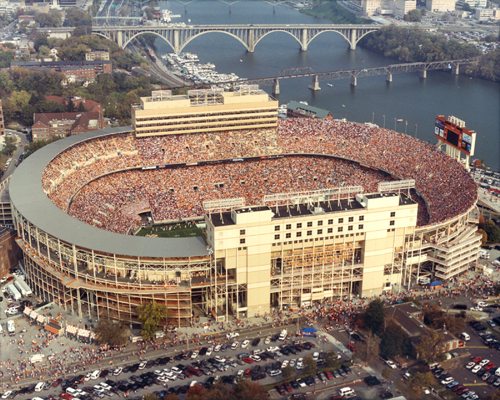
Neyland Stadium
Located on Philip Fulmer Way, Neyland Stadium is a beast of a stadium. Currently renovations are on schedule during the off-seasons to update and improve the structure. Over the 2009 off season, luxurious club seating was added and a beautiful, state-of-the-art jumbotron was installed (the old score board was never shut off, supposedly because the school was afraid it may never come back on). The southside of the stadium overlooks Neyland Drive, right beside the Tennessee River.
Originally, the Tennessee Volunteers' stadium was called Shields-Watkins Field. Named after the donor of the fields wife, Alice Watkins-Shields, the field contained a single grandstand and seated only 3,200 fans in 1921. Within five years more seats were added and continuous growth has occurred ever since. Here's a breakdown of the expansions:
- 1926 - East stands were added increasing capacity to 6,800
- 1929 - West stands were expanded, increasing capacity to 17,860
- 1937 - Small rows were added at the North endzone adding 1,500 more seats
- 1938 - East stands were expanded increasing capacity to 31,390
- 1948 - South endzone was enclosed increasing capacity to 46,290
- 1962 - West upper deck was added increasing capacity by 5,837 seats
- 1966 - North end zone seats were replaced for a grandstand adding 5,895 seats
- 1968 - East upper deck was added bringing total capacity to 64,429
- 1972 - West upper deck was extended adding 6,221 seats
- 1976 - East upper deck was extended adding 9,600 more seats, bringing the total to 80,250
- 1980 - North Endzone was enclosed to form a bowl style stadium
- 1990 - Seating adjustments were made to increase capacity to a total of 91,902
- 1996 - North upper deck was enclosed increasing capacity by 10,642
- 2000 - Seating adjustments were again made, bringing total capacity to 104,037
- 2006 - Club seats were added, bringing down capactiy
- 2009 - More club seats added, bringing capacity down to 100,011
In 1962, the field was renamed to Neyland Stadium after legendary head coach General Robert Neyland. He coached the Vols from 1926 to 1952, except for a few years where he served two tours of duty in the military. Neyland is credited for turning the Tennessee Volunteers into a football powerhouse and is largely responsible for the first major renovation to the stadium.
Though the stadium changed name, the field is still called Shields-Watkins Field. The 50-yard line is home to a dominant 'Power T', which has been in place since 1997. The most noticeable and signature feature of the field is the orange and white checkerboard end zone design, which first appeared in 1964, but was replace in 1968 for a simpler 'Tennessee' design. The checkerboard was brought back in 1989 and has remained in place ever since.
When first built, the stadium had a grass surface up until 1967, when the field was resurfaced with astroturf due to poor draining conditions after heavy rains. The astroturf stayed in place until 1993, when it was replace with Tiftway Bermuda due to the injuries caused from the artificial grass. For the 2007 season the surface received its first update since 1994. The entire field was resodded with Patriot Bermuda. The grass was laid over a twelve inch deep sand bed to help with the drainage issues the field experiences.
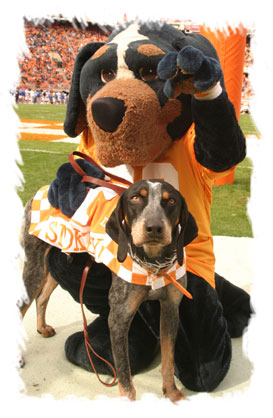
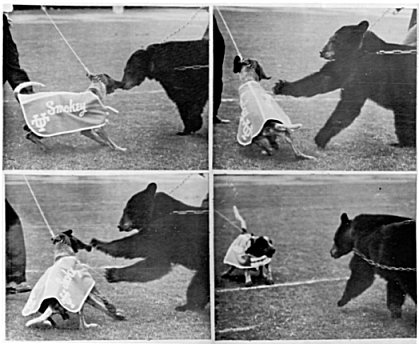
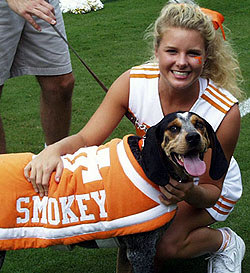
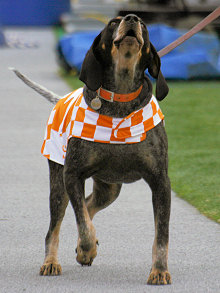
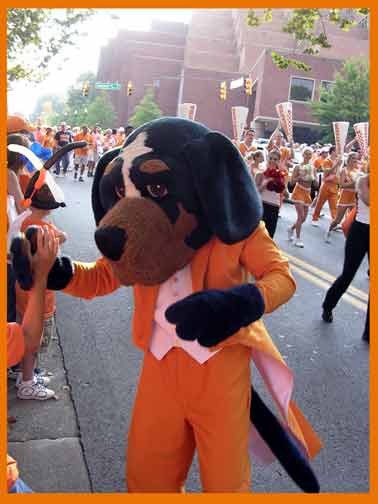
Smokey
The University of Tennessee employees two versions of their mascot, Smokey: A live bluetick coonhound and a costumed Smokey. The canine was originally selected as the mascot in 1953 after winning a student poll. During that year the Pep Club held a contest during the Mississippi State game to find the best hound for the job. During halftime of the game, several coon dogs were introduced to the crowd. The last dog to be introduced was Reverend Bill Brooks' dog 'Blue Smokey'. After being introduced, Blue Smokey howled loudly sending the crowd into wild cheers, thus winning the contest and becoming the official mascot.
Here's a brief rundown of the the animal Smokey:
- Smokey I - (1953-54) - The original Smokey Mascot
- Smokey II - (1955-64) - Stolen by University of Kentucky students in 1955. At the 1957 Sugar Bowl versus Baylor, Smokey II got into an altercation with Baylor's Live Bear Mascot.
- Smokey III - (1965-1977)
- Smokey IV - (1978-1979)
- Smokey V - (1980-1983)
- Smokey VI - (1984-1991) - First Smokey to make UT's injury report: suffered heat exhaustion at the UCLA game in 1991.
- Smokey VII - (1992-1994)
- Smokey VIII - (1995-2003) - Experience the heart of the Phillip Fulmer program and is the winningest of all the Smokey mascots: 91-22 record, 2 SEC championships, and the 1998 National Championship
- Smokey IX - (2004-Present)- Started his reign at the Peach Bowl




